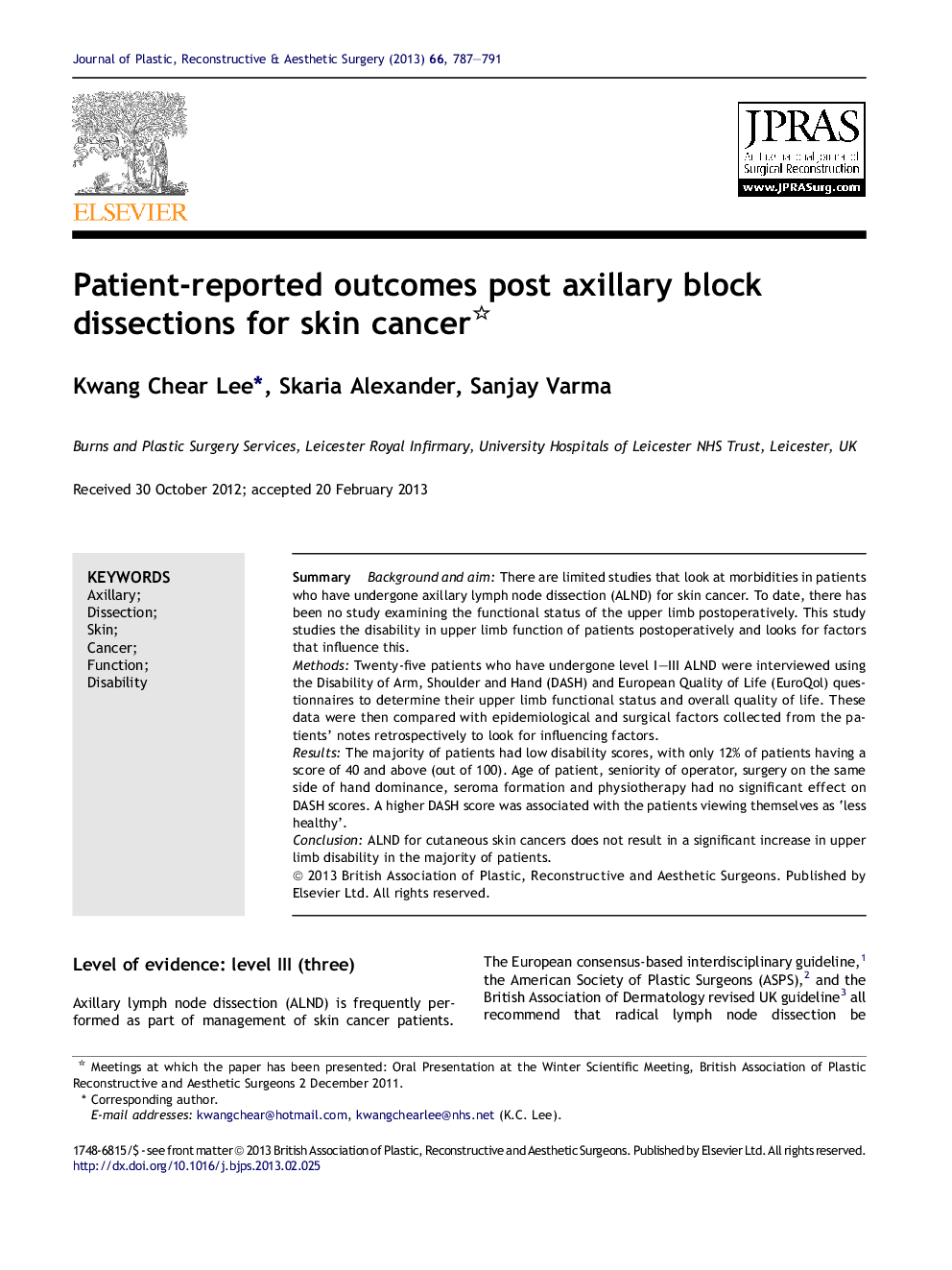| Article ID | Journal | Published Year | Pages | File Type |
|---|---|---|---|---|
| 4117717 | Journal of Plastic, Reconstructive & Aesthetic Surgery | 2013 | 5 Pages |
SummaryBackground and aimThere are limited studies that look at morbidities in patients who have undergone axillary lymph node dissection (ALND) for skin cancer. To date, there has been no study examining the functional status of the upper limb postoperatively. This study studies the disability in upper limb function of patients postoperatively and looks for factors that influence this.MethodsTwenty-five patients who have undergone level I–III ALND were interviewed using the Disability of Arm, Shoulder and Hand (DASH) and European Quality of Life (EuroQol) questionnaires to determine their upper limb functional status and overall quality of life. These data were then compared with epidemiological and surgical factors collected from the patients' notes retrospectively to look for influencing factors.ResultsThe majority of patients had low disability scores, with only 12% of patients having a score of 40 and above (out of 100). Age of patient, seniority of operator, surgery on the same side of hand dominance, seroma formation and physiotherapy had no significant effect on DASH scores. A higher DASH score was associated with the patients viewing themselves as ‘less healthy’.ConclusionALND for cutaneous skin cancers does not result in a significant increase in upper limb disability in the majority of patients.
